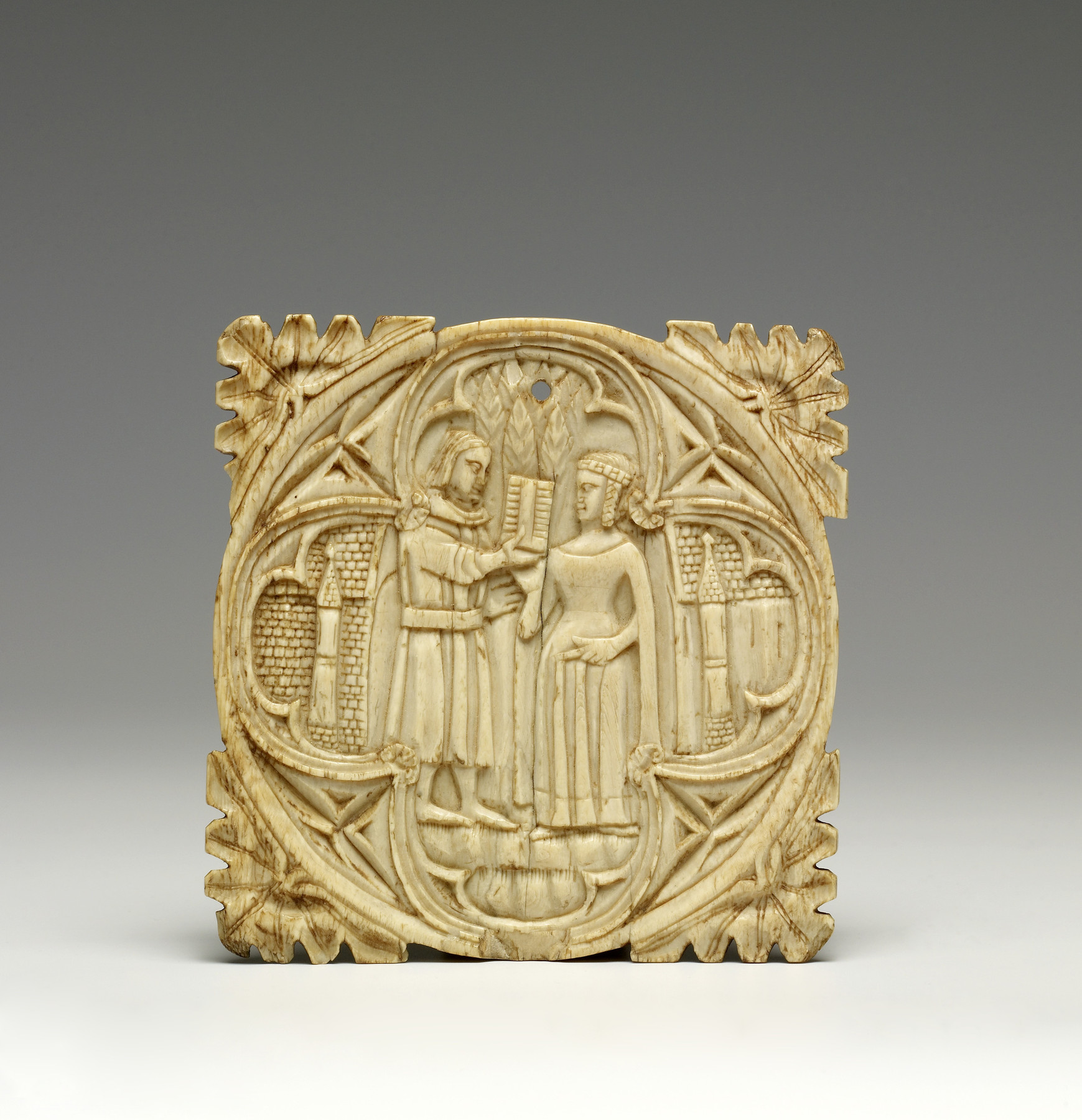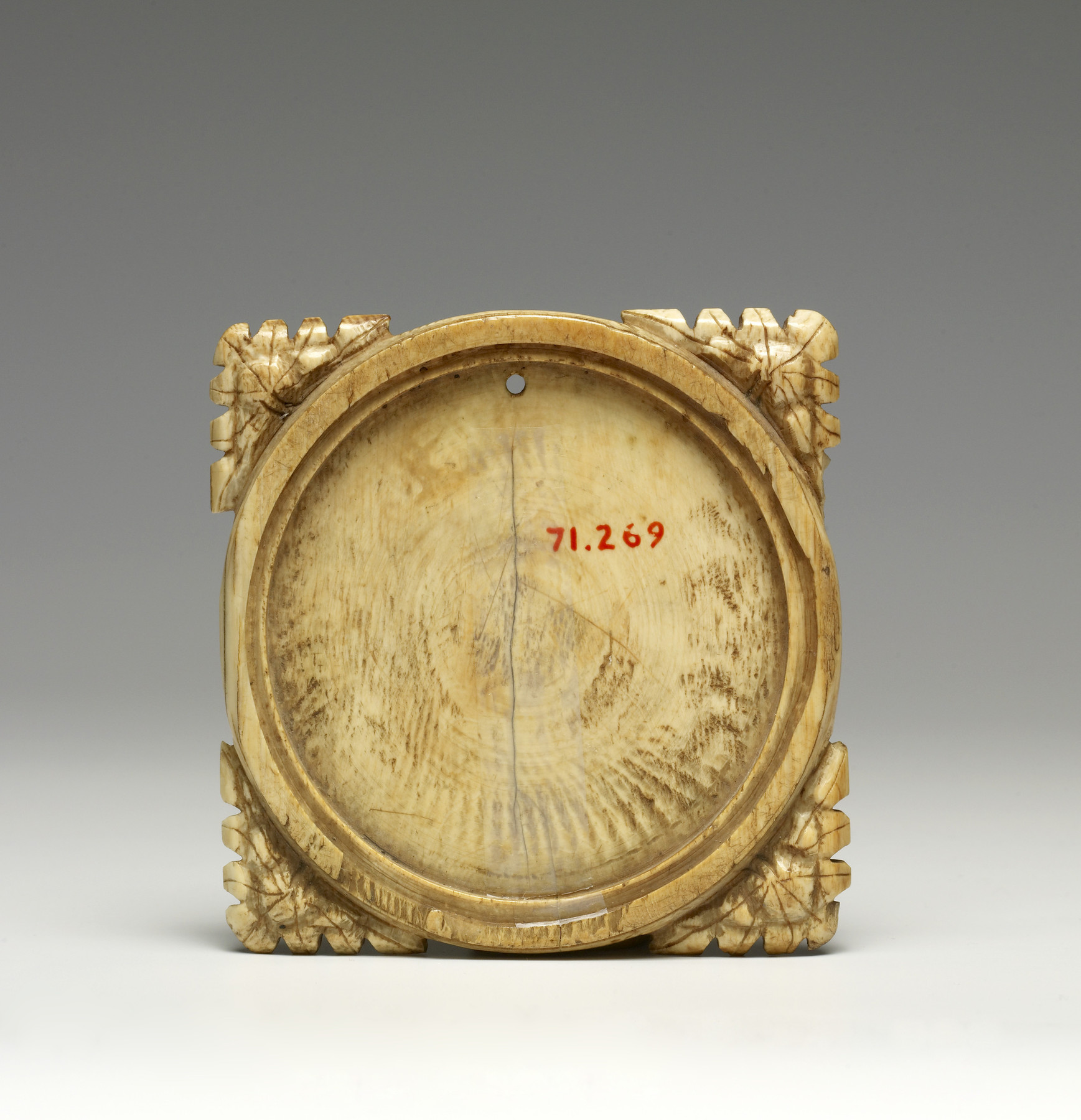Mirror Case with the Gift of the Comb
(Medieval Europe )
A couple is seen in the center of the composition; the gentleman, in belted robe, offers a comb to his lady. She is dressed in a "houppelande," with long pendants from the elbows, and her hair is braided and dressed in a cap over the ears. The landscape consists of a stylized castle at each side, a tree at the center, and a boulderlike ground plane. The subject is contained within a quatrefoil of tracery with leaf terminals. The circular mirror form is brought to a square with four leaf-corner projections with incised veins.
Provenance
Provenance (from the French provenir, 'to come from/forth') is the chronology of the ownership, custody, or location of a historical object. Learn more about provenance at the Walters.
Lord H. Gibson-Carmichael Collection [date and mode of acqusition unknown]; Lord H. Gibson-Carmichael Sale, London, May 12-13, 1902; George R. Harding, London [date and mode of acqusition unknown]; Henry Walters, Baltimore, 1903, by purchase; Walters Art Museum, 1931, by bequest.
Walters Collection
Exhibitions
| 2016-2017 | A Feast for the Senses: Art and Experience in Medieval Europe. The Walters Art Museum, Baltimore; The John and Mable Ringling Museum of Art, Sarasota. |
| 1995-1996 | Medieval Games of Love and War. The Walters Art Gallery, Baltimore. |
| 1962 | The International Style: The Arts in Europe Around 1400. The Walters Art Gallery, Baltimore. |
Geographies
Italy, Milan
(Place of Origin)
Italy, Lombardy (Place of Origin)
Measurements
H: 3 13/16 × W: 3 11/16 × D: 5/16 in. (9.7 × 9.4 × 0.8 cm)
Credit Line
Acquired by Henry Walters, 1903
Location in Museum
Not on view
Accession Number
In libraries, galleries, museums, and archives, an accession number is a unique identifier assigned to each object in the collection.
In libraries, galleries, museums, and archives, an accession number is a unique identifier assigned to each object in the collection.
71.269






